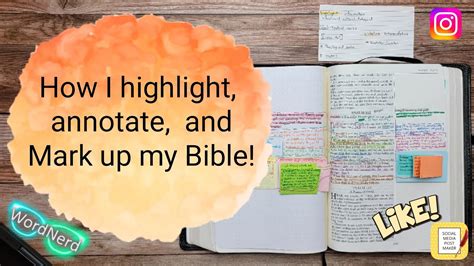How to Annotate the Bible on a Budget: Unlocking Scripture's Riches Without Breaking the Bank
Annotating your Bible can transform your study of Scripture from a passive reading experience into an active, engaging dialogue with God's Word. But the thought of purchasing expensive Bible study tools might seem daunting, especially on a budget. Fear not! Unlocking the riches of Scripture doesn't require a hefty price tag. This guide will equip you with practical and affordable methods for annotating your Bible effectively.
What Do You Need to Annotate Your Bible?
Before diving into specific methods, let's consider the essentials:
-
A Bible: This might seem obvious, but choose a translation you understand and enjoy reading. A less expensive edition, even a used one, will work perfectly. Consider a translation known for its readability, like the NIV, ESV, or NLT.
-
Writing Utensils: This is where you can really save money. Instead of specialized Bible journaling pens, consider these alternatives:
- Pencils: Pencils allow for easy corrections and are gentler on the pages. A standard #2 pencil will do the trick.
- Fine-tip pens: If you prefer pen, choose a fine-tip pen with archival-quality ink to prevent smearing or fading over time. Inexpensive ballpoint pens are readily available.
- Highlighters: These are great for emphasizing key verses or themes. Again, inexpensive options are readily available at most stores.
-
Optional but Helpful:
- Index cards: These are fantastic for jotting down thoughts, sermon notes, or cross-references before writing them in your Bible.
- Sticky notes: Useful for marking specific passages for later review. Plain, inexpensive notes are perfect.
- Notebook or Journal: A separate notebook can supplement your Bible annotations. Use it for more extensive thoughts, prayers, or research.
Different Annotation Methods on a Budget
Here are several annotation methods you can use without breaking the bank:
Highlighter Method:
This simple method involves highlighting key words, phrases, or verses that stand out to you. Use different colors to represent different themes or concepts. For example, red for promises, blue for commands, and green for prophetic passages.
Pencil Method:
This gentle approach allows for easy correction and experimentation. Use a pencil to underline key verses, write brief notes in the margins, or circle important words.
The Note-Taking Method:
Instead of writing directly in your Bible, use index cards or a notebook. This is particularly helpful for detailed notes or cross-references, protecting your Bible's pages from excessive writing. You can later transfer the most important notes into the margins if desired.
The Color-Coded System:
Expand the highlighter method with a comprehensive system. Assign each color a specific meaning (e.g., character study, theological reflection, prayer requests). A legend on the inside cover can help you keep track.
How to Choose the Best Budget-Friendly Method for You?
The best method depends on your learning style and the type of study you’re doing. Experiment to see what works best for you. If you're unsure, start simple with highlighting and pencil underlining before incorporating other methods.
What if I want to use a digital Bible?
Many free Bible apps are available that allow for annotation. These are excellent budget-friendly alternatives to expensive software. You can highlight, underline, and add notes, often syncing your progress across different devices.
Frequently Asked Questions (FAQs)
What are some affordable resources for Bible study beyond annotation?
There are many free online resources available! Search for online Bible dictionaries, commentaries (often available in their entirety on sites like Blue Letter Bible), and study guides. Many libraries also offer free access to extensive resources.
Is it okay to write in a borrowed Bible?
Always ask the owner's permission before annotating a borrowed Bible. Respect their property and avoid permanent markings unless explicitly allowed.
Should I use a particular type of ink for my Bible?
Archival-quality ink is ideal to prevent fading and smearing over time, but affordable ballpoint pens work fine for casual use. Avoid pens that bleed through the pages.
How can I keep my Bible annotations organized?
Develop a consistent system for highlighting, underlining, and note-taking. Use a legend or key to explain your color-coding system. Regularly review your annotations to ensure clarity and relevance.
By employing these budget-friendly strategies, you can embark on a rich and rewarding journey of Bible study. Remember, the most important element is engaging with God's Word actively, allowing it to shape and transform your life. Happy annotating!

